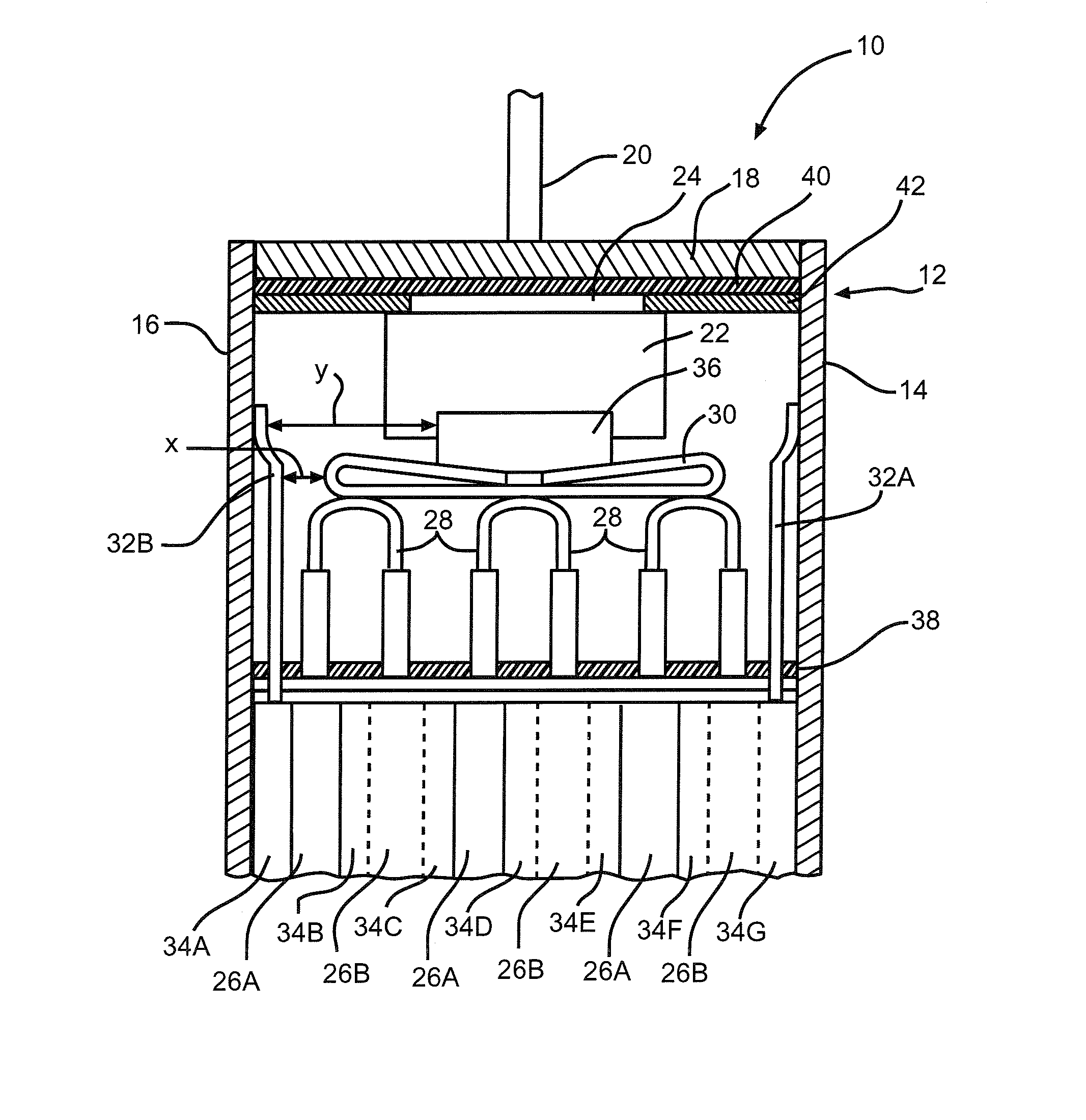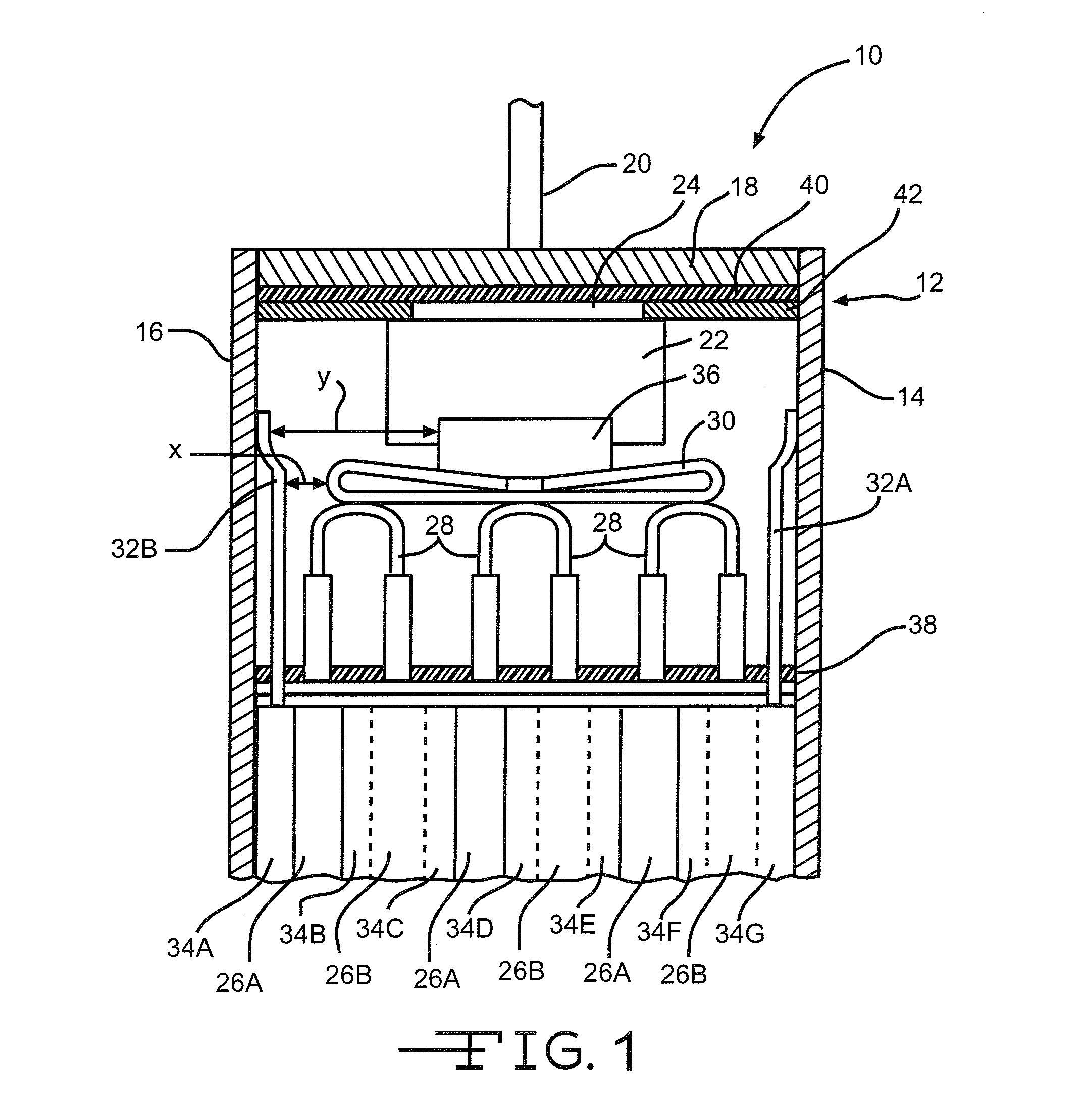Prevention of lithium deposition in nonaqueous electrolyte cells by electrolyte-to-cathode weight ratio
a nonaqueous electrolyte cell, electrolyte-to-cathode technology, applied in the direction of non-aqueous electrolyte cells, cell components, secondary cells servicing/maintenance, etc., can solve the problem of premature discharge of the cell, and achieve the effect of preventing lithium clusters
- Summary
- Abstract
- Description
- Claims
- Application Information
AI Technical Summary
Benefits of technology
Problems solved by technology
Method used
Image
Examples
example i
[0044]Li / SVO cells commercially available from Wilson Greatbatch Technologies, Inc., Clarence, N.Y. served as a control cell group in this example. The cells were activated with an electrolyte of 1.0M LiAsF6 in a 50:50, by volume, mixture of PC:DME to provide an electrolyte-to-cathode (E / C) weight ratio of about 0.46 to about 0.52 based on a gram amount of the cathode active material. A second group of Li / SVO cells, identical to the control cells except for their electrolyte fill weights, served as the test group. The second cell group contained an average of about 26% less electrolyte than the control group. Their E / C weight ratio was about 0.34 to about 0.37. Each group contained 13 cells.
[0045]The control and test cells were then subjected to a 16-day test to mimic usage in an implantable cardiac defibrillator device, under accelerated conditions. The cells were positioned lying on their side with the positive terminal pin in the up position and then discharged at 37° C. under a ...
example ii
[0047]Thirty-six Li / SVO cells similar in construction to those used in Example I were built with varying amounts of electrolyte fill weights. The cells were divided into two groups of 18 cells each. The first group contained SVO prepared at 375° C. according to U.S. Pat. No. 4,310,609 to Liang et al. while the second group had SVO prepared at 500° C. as described in U.S. Pat. No. 6,221,534 to Takeuchi et al. The cells containing the respectively prepared SVO materials were activated with an electrolyte of 11.0M LiAsF6 in a 50:50, by volume, mixture of PC:DME. For each SVO type, there were three subgroups of six cells each. The subgroups had E / C weight ratios of about 0.52 to 0.54 (about 5% greater than the standard amount of about 0.46 to about 0.52), about 0.43 to 0.47 (about 10% less than the standard amount), and about 0.37 to 0.40 (about 30% less than the standard amount), respectively.
[0048]The cells were then subjected to a discharge protocol at 37° C. consisting of twelve 2.0...
PUM
| Property | Measurement | Unit |
|---|---|---|
| weight ratio | aaaaa | aaaaa |
| weight ratio | aaaaa | aaaaa |
| current densities | aaaaa | aaaaa |
Abstract
Description
Claims
Application Information
 Login to View More
Login to View More - R&D
- Intellectual Property
- Life Sciences
- Materials
- Tech Scout
- Unparalleled Data Quality
- Higher Quality Content
- 60% Fewer Hallucinations
Browse by: Latest US Patents, China's latest patents, Technical Efficacy Thesaurus, Application Domain, Technology Topic, Popular Technical Reports.
© 2025 PatSnap. All rights reserved.Legal|Privacy policy|Modern Slavery Act Transparency Statement|Sitemap|About US| Contact US: help@patsnap.com



